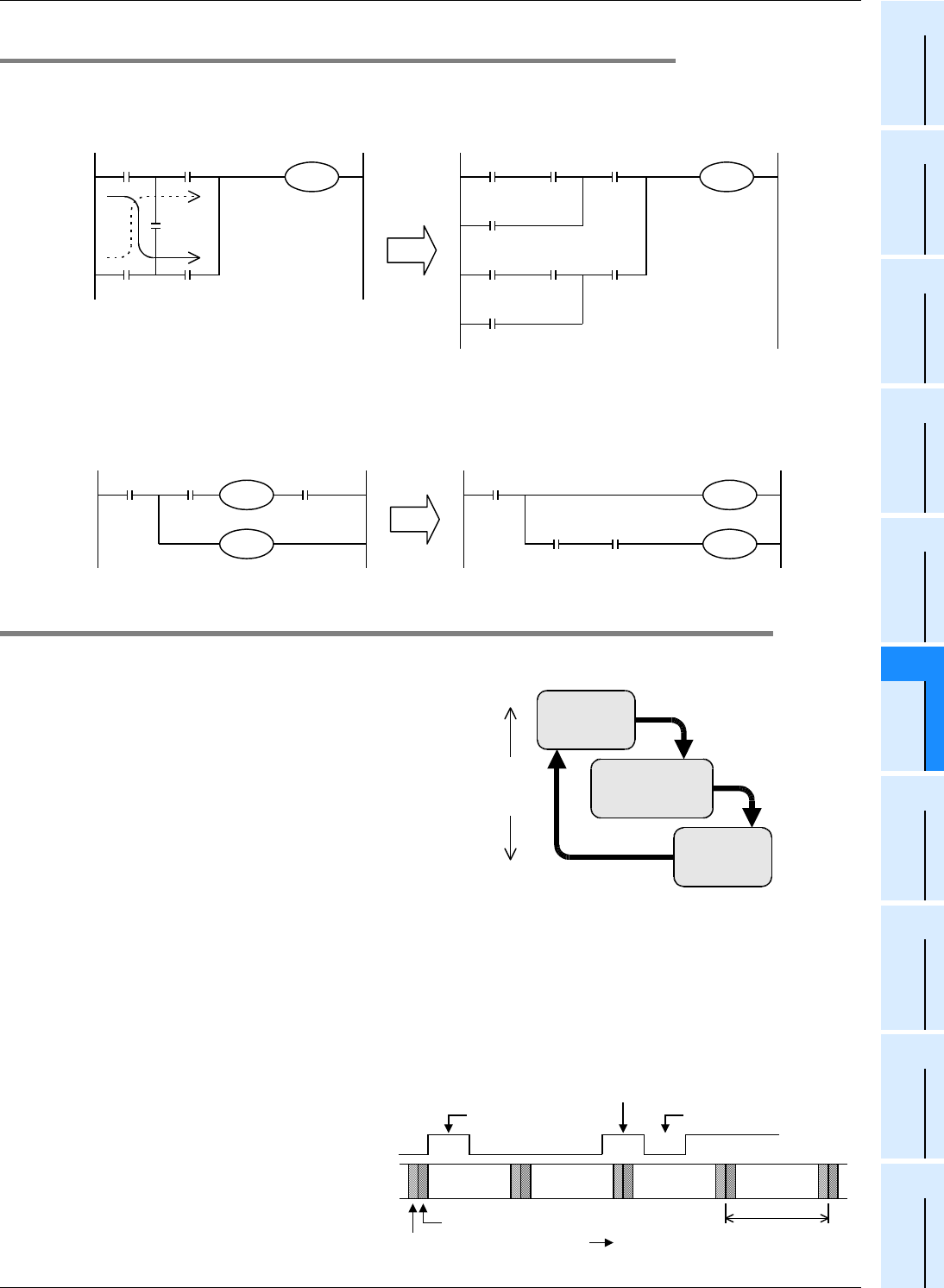
171
FX3S/FX3G/FX3GC/FX3U/FX3UC Series
Programming Manual - Basic & Applied Instruction Edition
6 What to Understand before Programming
6.3 I/O Processing and Response Delay
1
Introduction
2
Overview
3
Instruction
List
4
Devices
in Detail
5
Specified the
Device &
Constant
6
Before
Programming
7
Basic
Instruction
8
FNC00-FNC09
Program Flow
9
FNC10-FNC19
Move & Compare
10
FNC20-FNC29
Arith. & Logic
Operation
6.2.3 Circuits which cannot be programmed and countermeasures
1. Bridge circuit
A circuit in which the current flows in both directions should be changed as shown in the figure on the right (so that a
circuit without D and a circuit without B are connected in parallel).
2. Coil connection position
• Do not write a contact on the right side of a coil.
• It is recommended to program a coil between contacts first.
The number of steps can be saved when a coil (E) between the contacts A and B is programmed first.
6.3 I/O Processing and Response Delay
1. Operation timing of I/O relays and response delay
FX PLCs execute the I/O processing by repeating the
process (1) to process (3).
Accordingly, the control executed by PLCs contains not
only the drive time of input filters and output devices but
also the response delay caused by the operation cycle.
Acquiring the latest I/O information
For acquiring the latest input information or immediately
outputting the operation result in the middle of the
operation cycle shown above, the I/O refresh instruction
is available.
2. Short pulses cannot be received.
The ON duration and OFF duration of inputs in PLCs require longer time than "PLC scan time + Input filter response
delay".
When the response delay of the input filter "10 ms" is considered and the scan time is supposed as "10 ms", the ON
duration and OFF duration should be at least 20 ms respectively.
Accordingly, PLCs cannot handle input pulses at 25 Hz (1000 / (20 + 20) = 25) or more. However, the situation can be
improved by PLC special functions and applied instructions.
Convenient functions for improvement
By using the following functions, PLCs can
receive pulses shorter than the operation
cycle:
• High-speed counter function
• Input interrupt function
• Pulse catch function
• Input filter value adjustment function
A B
F
C
E
D
C E
F
A
B
A E
C
D
A B
C
D
E
A
B
E
C
D
[Input
processing]
Input image
memory is read
[Output processing]
Result is
transferred to
output latch
memory
The ON/OFF status of input
terminals is received at one time.
Input image is read,
and operation is
executed according
to program.
Output
devices
are driven
Batch I/O method
(refresh method)
(1)
(3)
Scan time
(operation
cycle)
[Program processing]
Image memory of
each device is
updated
(2)
Program
processing
Program
processing
Program
processing
Program
processing
ON ON
OFFOFF
"Input ON" cannot
be received
This "input ON" can be received
This "input OFF"
cannot be received
Input processing
( Time)
Output processing
Operation cycle


















